A beginner’s guide to Mexican candy

The vast and delicious universe of Mexican candy can’t be properly addressed in one mere article, but this is an attempt to, at the very least, give an overview of the tastes, textures and kinds of flavors. All candy has sugar. What Mexican candy brings, in addition to that, is plenty of salt and spice.
Have you ever had a Michelada? Bought mango covered in lime, salt and chile from a fruit cart? Tried fruity, fermented chamoy, which seems to stimulate almost every taste bud on your tongue simultaneously? These are the kinds of flavors you can come to expect — and love — in Mexican candy.
As part of the “research” for this story, I corralled my colleagues Gustavo Arellano, Cody Long and Brittny Mejia into eating a mountain of candy, and I owe them a debt of thanks (thanks too, to Martina Ibáñez-Baldor for the idea). You can watch us gorge and debate our favorites over on our YouTube channel.
And now, here’s a far-from-exhaustive rundown of some of our favorite (and not-so-favorite) Mexican candies:
OUR FAVORITES
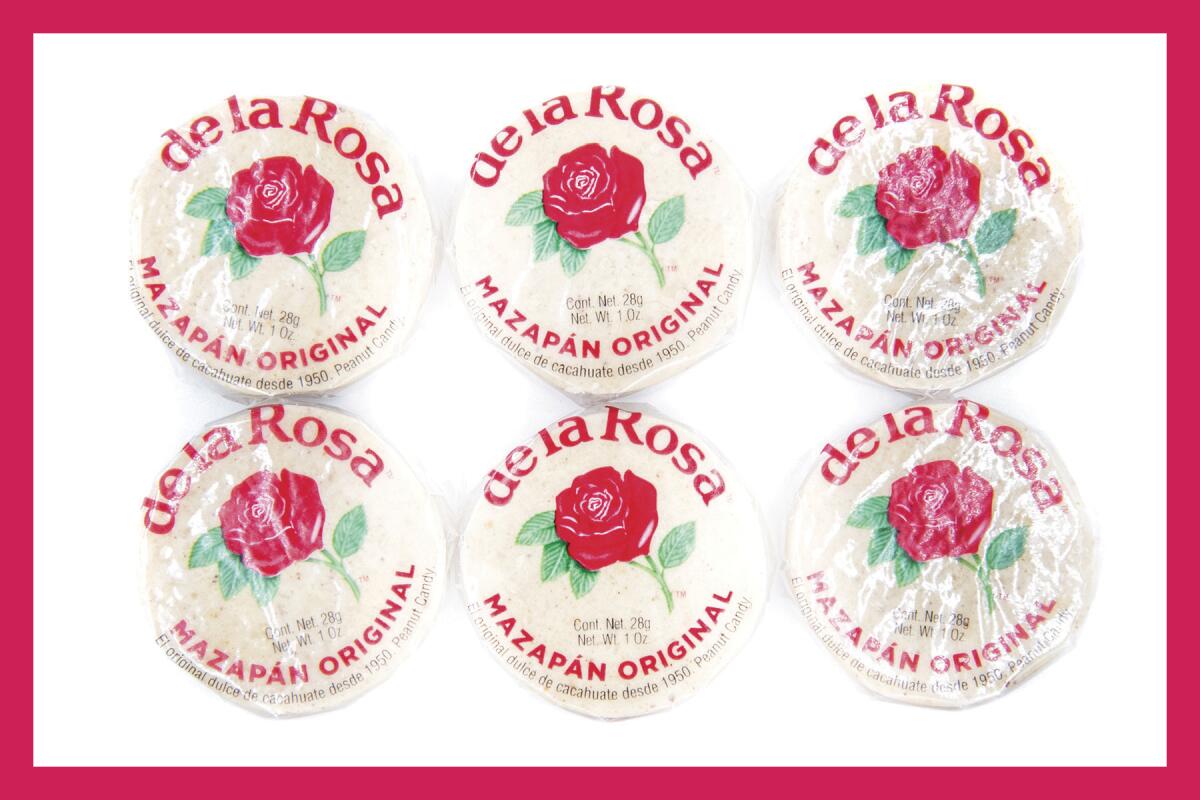
De La Rosa Mazapán
The story of De La Rosa and its famous peanut marzipan begins with Jesús Michel González and Elvira Velasco Rolón opening a small candy business from their home in Guadalajara in 1942. The logo on its wrapper was originally three strawberries. González changed it to a rose after a competitor with a similar logo threatened to sue.
It was a good choice — Guadalajara is nicknamed the city of roses, after all. And the De La Rosa group now employs thousands — people around the world crave the sweet, nutty taste and slightly chalky texture of De La Rosa mazapán.
One of the eating methods, as explained by Times columnist Arellano, is to pop the entire puck into your mouth and push a little bit up between the teeth and upper lip. Then you sit back and enjoy, like a centerfielder with a plug of chewing tobacco, while the macerated peanut goodness slowly dissolves. This was the overwhelming favorite of the candy we tried.
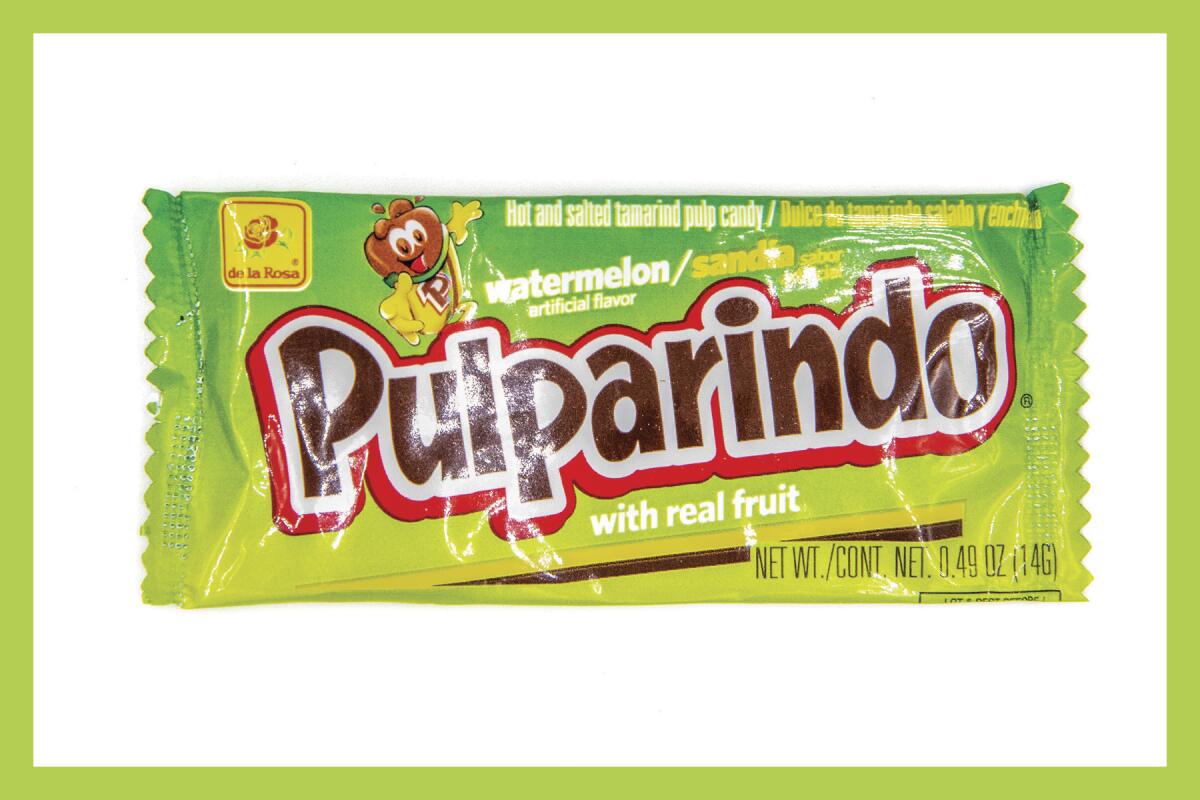
Pulparindo
Blessed are the tamarind trees, and their pods full of tangy pulp. De La Rosa, lest they be considered a mere one-trick pony, has another excellent product in Pulparindo, essentially a grainy, tamarind-flavored fruit leather. That tamarind base flavor can then have an additional fruit flavor layered onto it — like watermelon or mango. The result is sweet, salty, fruity and incredibly craveable.
This candy (among others) is evocative of li hing mui, a powerfully salty-sweet dried Chinese plum that can provoke involuntary wincing in the uninitiated. Li hing powder is especially popular in Hawaii, where it’s consumed on things like candy and shave ice and in alcoholic drinks.
Pulparindo has that same perfect balance of sweet, savory and fruitiness — a very solid candy.
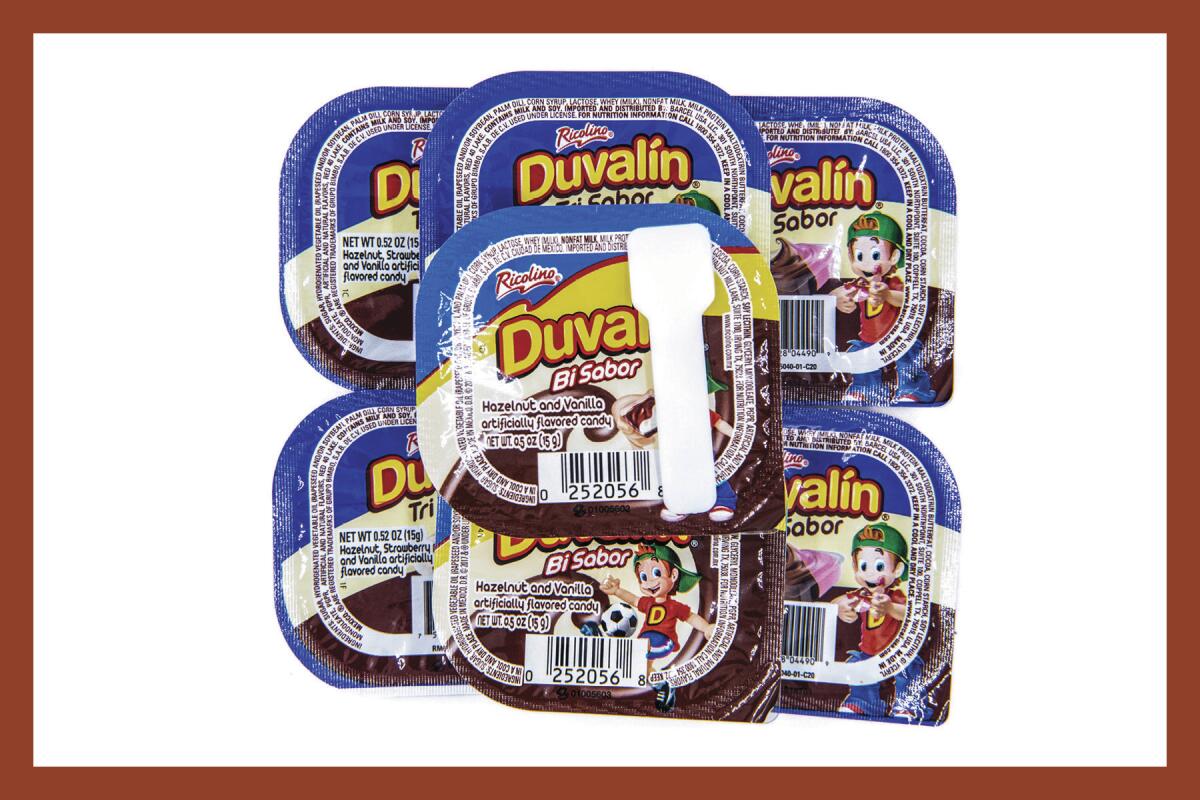
Duvalín
Duvalín is advertised as “artificially flavored candy,” but a more apt description might be “package of frosting.” A favorite of Times staff writer Mejia, Duvalín comes in a few flavors, typically some combination of chocolate, vanilla and strawberry. It also comes with a very tiny spoon that you can use to eat the frosting.
That’s about all there is to say about Duvalín — it’s literally just frosting. Totally decent, cupcake-quality frosting. Could it be improved by the inclusion of, say, tiny cookie sticks? Undoubtedly.
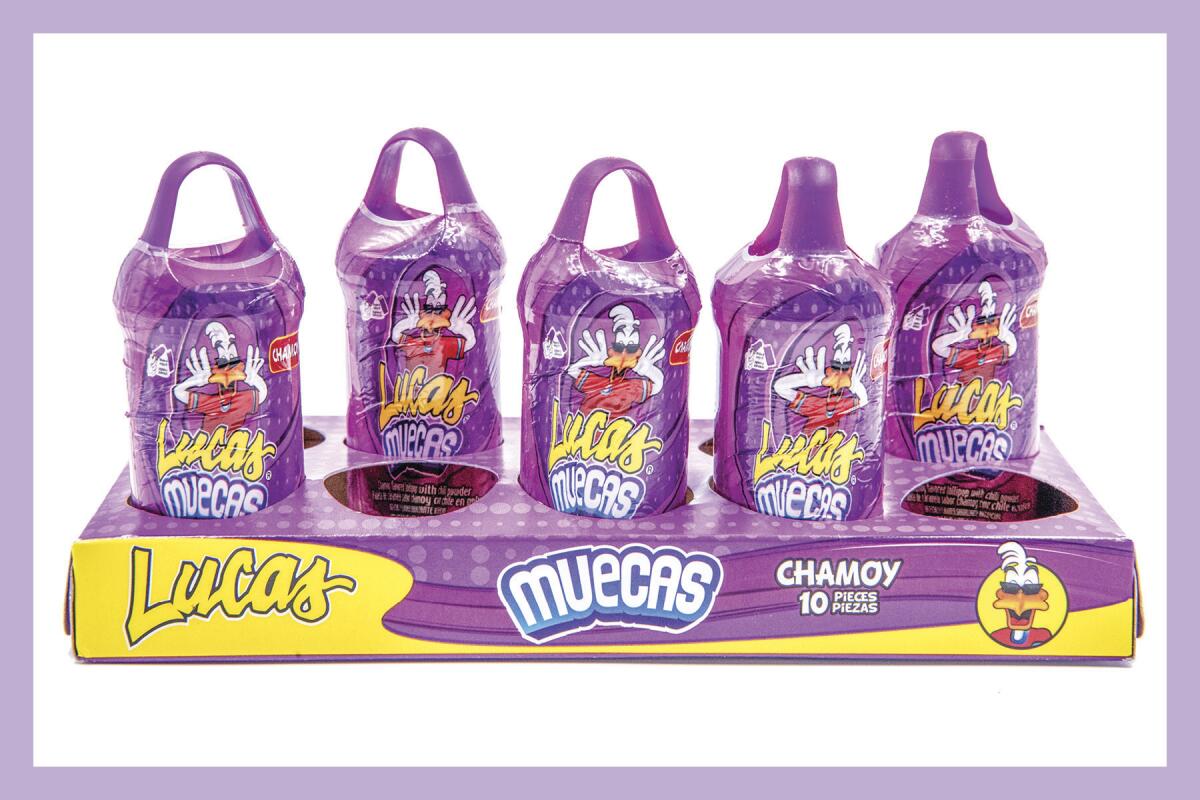
Lucas Muecas (Chamoy)
I didn’t like this initially but, upon retrying, it turned out to be one of my favorites, despite the similarity of the name to “Lucas Mucas,” a moniker I was tortured with in grade school.
There are layers to Lucas Muecas: First, there’s the chamoy-flavored lollipop, which sits in what looks like a small film canister (remember those?) that’s filled with salty-sweet chile powder. Together, they complement each other nicely.
Finally, the lollipop is attached to a closed loop of plastic, meaning, that’s right, you can wear it on your finger as a ring. Is there anything better? Just be careful when opening the package not to spill the powder all over you (as I did in the video).
Pelon Pelo Rico
Remember Chia Pets? Put the seed paste on a little sheep, or a guy’s face, then watch the hair grow? There’s a lot of “hair-growing” in the Mexican candy diaspora, and I can’t say I’m mad at it. The Pelon Pelo Rico (roughly, “tasty bald hair”) gets its name from the push-pop-like action of extruding goopy tamarind through a bunch of tiny holes so that it looks like strands of hair.
It’s pretty fun to do, and it’s tasty too, a favorite of staff videographer Long. It’s basically a gritty tamarind-flavored paste. Extremely gritty. If it were any more gritty, it’d be moonlighting as a hockey mascot. If you can get over that, you’ll enjoy the sweet-sour tamarind flavor that infuses so many Mexican candies.

THE BEST OF THE REST
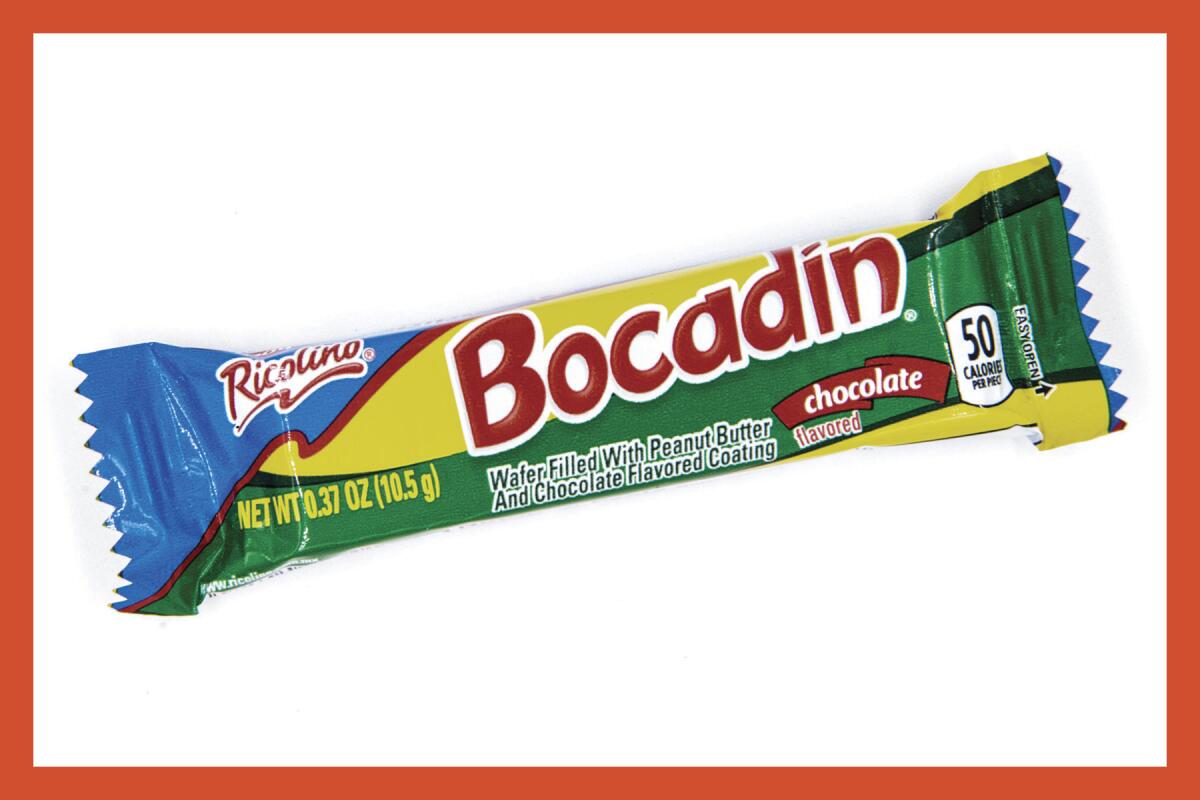
Ricolino Bocadín
This entry from Grupo Bimbo (you may know their baked goods) is essentially a better version of a Kit Kat. Why better, you ask? It’s layers of thin, chocolate-coated wafers, but what gives Bocadín an extra little boost is the addition of peanut butter.
Peanut butter and chocolate are as foolproof a combo as Eric B. and Rakim — is it a little predictable? Sure, but that doesn’t mean I’m going to stop eating it.
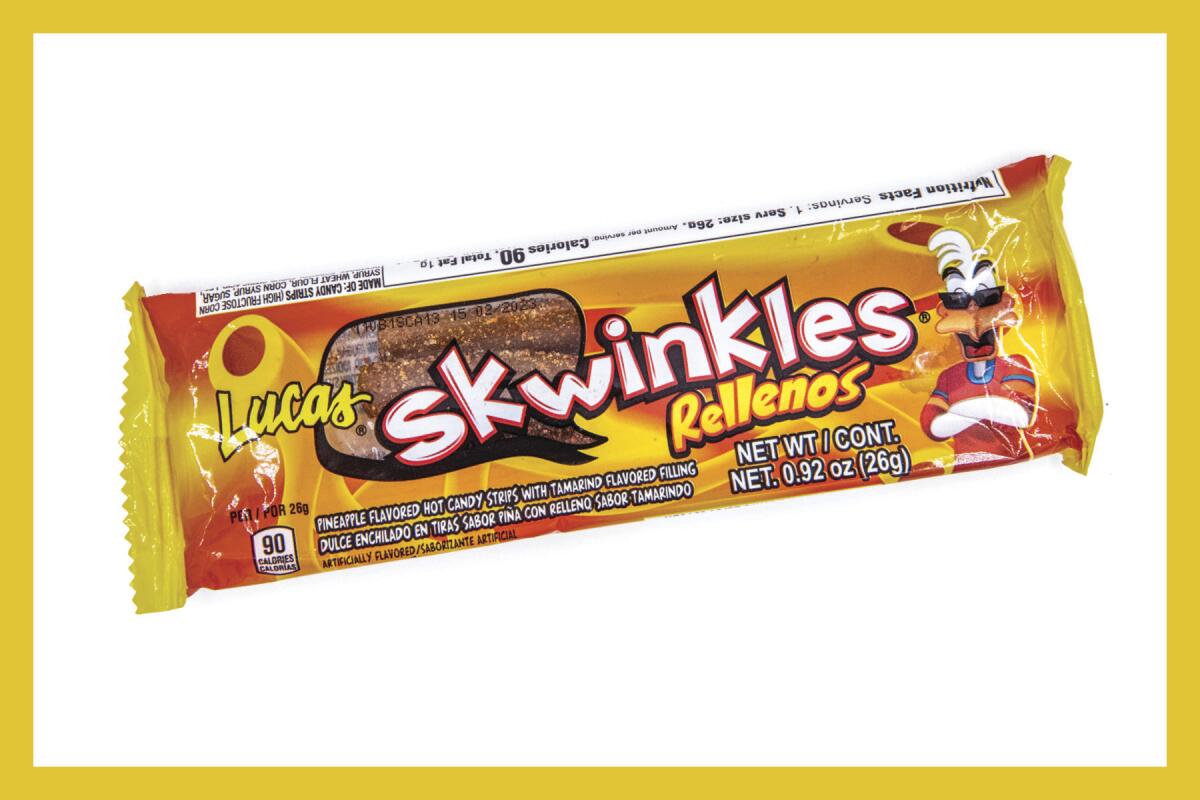
Lucas Skwinkles
There are a few versions of Skwinkles (from the Spanish word “escuincle,” something you might call a misbehaving child), but the one we tried, a long sugar-coated tamarind tube with pineapple filling, was particularly good.
It’s another entry from Lucas, the powerhouse candy brand now owned by Mars. The mascot is an in-your-face, sunglasses-wearing cartoon duck who seems to be encouraging you to cut fifth-period science, do a kickflip on your skateboard and chow down on some candy. Preferably all at the same time.
The Skwinkle is like the best possible version of a gummy worm — it’s not as chewy, but it makes up for that in fruity tanginess.
Moreliates Cuadritos
Moreliates, a Michoacan-based company, makes this very good candy from pieces of tejocote, or Mexican hawthorn. The tiny cubes taste slightly of apple and are a delight to eat, but more important, they kicked off an interesting discussion among the group: What is candy?
Most of the time, it’s one of those Potter Stewart, know-it-when-I-see-it issues: Cupcakes? While sweet, obviously not candy. Butterscotch? Clearly candy. With the Cuadritos, there was a question if something that was essentially fruit could still be considered candy.
I say yes — if something is covered in sugar or mostly sugar, and can be broken or shared in pieces, it’s candy. But I’m willing to listen to counterarguments: Where does fruit end and candy begin?
Montes Tomy Butterscotch Candy
A delightful candy. These small, individually wrapped candies are reasonably milky and creamy with a vaguely fruity undertone. I can imagine picking up a handful of these at grandma’s house.

Obleas con Cajeta
One thing that was said during the tasting was that I bought the wrong brand of these — Cabadas, instead of Las Sevillanas or Aldama. I take responsibility and blame the error on my sugar-induced haze. (For the record, I tried a Las Sevillanas oblea later and it was roughly the same.)
This popular confection, goat milk caramel candy sandwiched between two thin wafers, is pretty good no matter the brand, though. The wafers could have been crispier, but the vaguely stale chew of them made the connection with communion wafers even that much more pronounced.
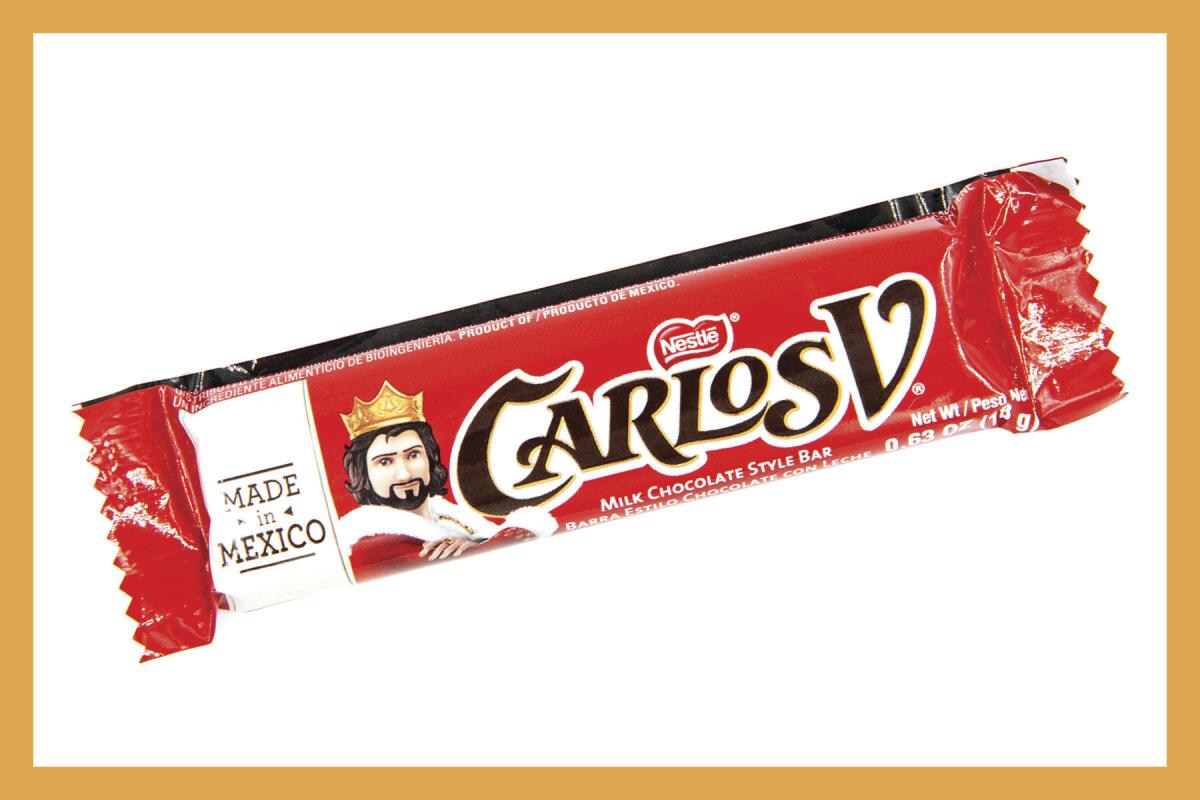
Carlos V
How many Holy Roman Emperors can say they have their own chocolate bar? Chocolate was enjoyed for thousands of years by Mesoamerican civilizations before Carlos V, or Charles V, ever tried it. But it may have been due to a suggestion from Hernán Cortés himself in the 16th century that Carlos V popularized chocolate as a sweet treat, as opposed to a drink.
I wasn’t there, so I can’t be sure. I will say, though, that the Carlos V bar (made by Nestlé) is a very acceptable chocolate bar. It won’t knock your socks off, but give the poor guy a break — he was busy waging war all over the globe.
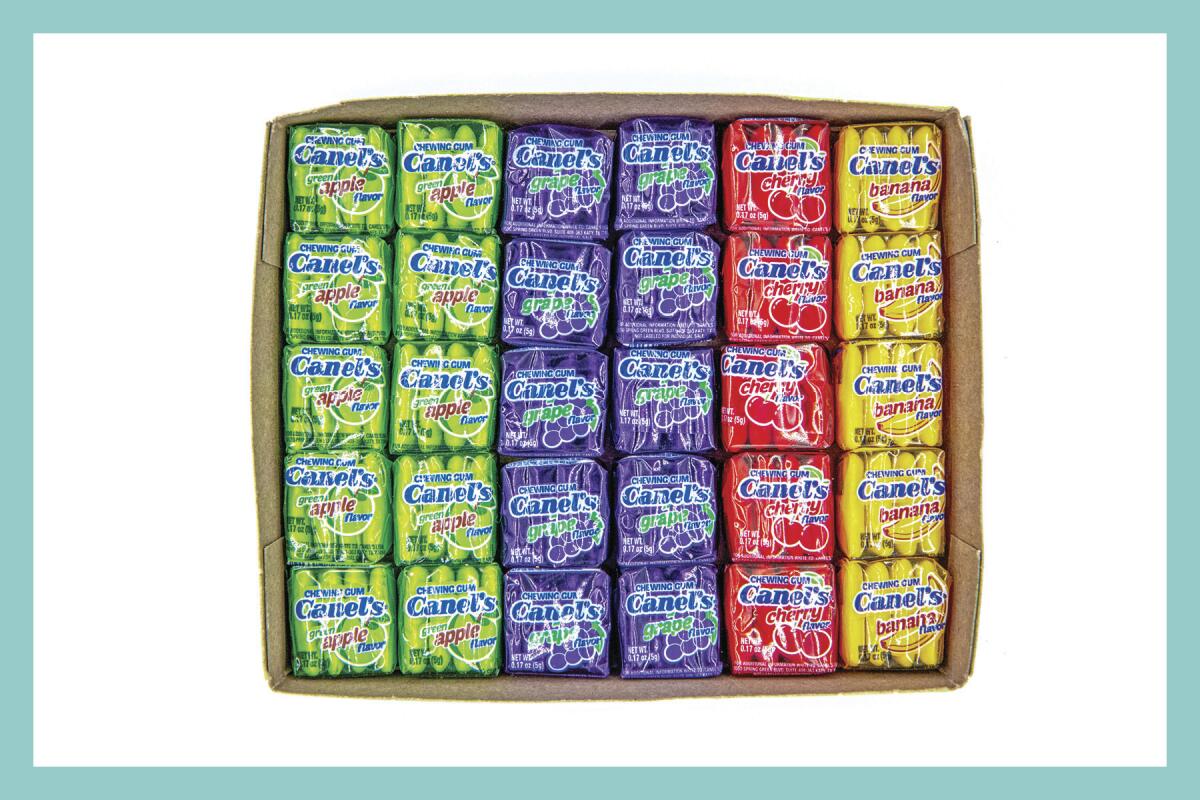
Canel’s Chewing Gum
Canel’s, a venerable Mexican candy company that started in 1925, makes many different products, including La Vaquita lollipops and tiny, cute packages of chewing gum. Each package of Chiclets-like gum (the name Chiclets, as you might guess, comes from the Spanish word for gum, “chicle”) comes in a variety of flavors: apple, grape, banana, etc.
Like all good gum, it loses its flavor in approximately 14 seconds. That’s why there are four pieces per package.
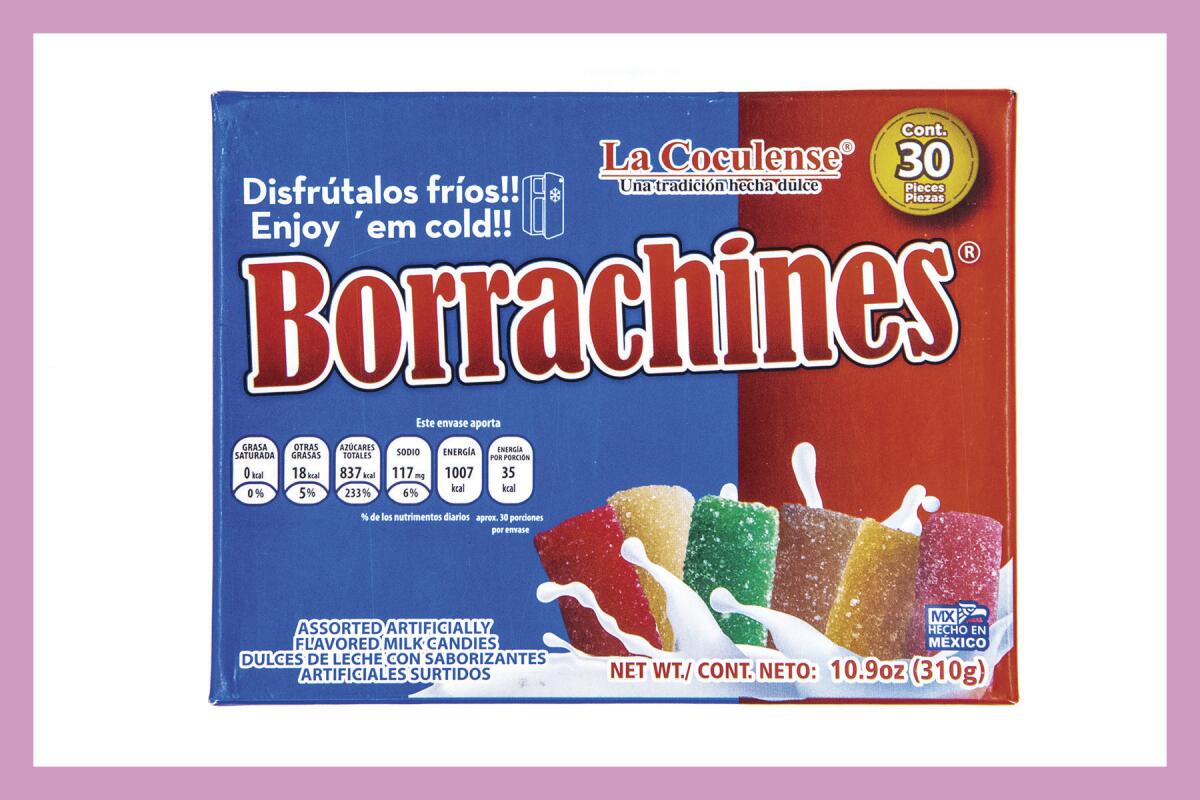
Borrachines
Borrachines (from the word borracho, or “drunk”) are deceptive little candies that would seem, from the rainbow of colors they come in, to be fruit-flavored. They are not. They’re sweet milk candies that come in different boozy (or booze-friendly) flavors like rum butter, tequila, whiskey and eggnog.
The packaging suggests “disfrútalos fríos” — try them cold — and that’s a decent idea. It firms the candies up a bit; otherwise, they liquefy in your mouth pretty much instantly. The flavor? Like a PG-13 dulce de leche. The eggnog actually tastes like eggnog. The tequila… well, the tequila won’t fool anybody.
Don Chuy Cuchara de Tamarindo
Sometimes you just want a big spoonful of tamarind pulp. And that is exactly what this is, no more and no less. I like this if only because it’s exactly what is advertised: quite literally a white plastic spoon and some tamarind pulp. It’s got seeds and everything. And hey, when you’re done, you get a free spoon out of it!
Mayito’s Mango Perico/Eloton Enchilado
I appreciate the honesty on the packaging of the Eloton Enchilado, which states “Exceso Calorías,” “Exceso Azúcares” and “Exceso Sodio” at the top (“Excess calories, excess sugars, excess sodium”).
It’s not an inaccurate way to describe the chile-covered lollipop that is shaped adorably like a corncob and, to a lesser degree, the lolly shaped like a mango. The corncob, in particular, is caked in searingly mouth-puckering chile, but that makes it more pleasurable when you break through to the fruity sweetness on the inside (it’s not corn-flavored, as you might think).
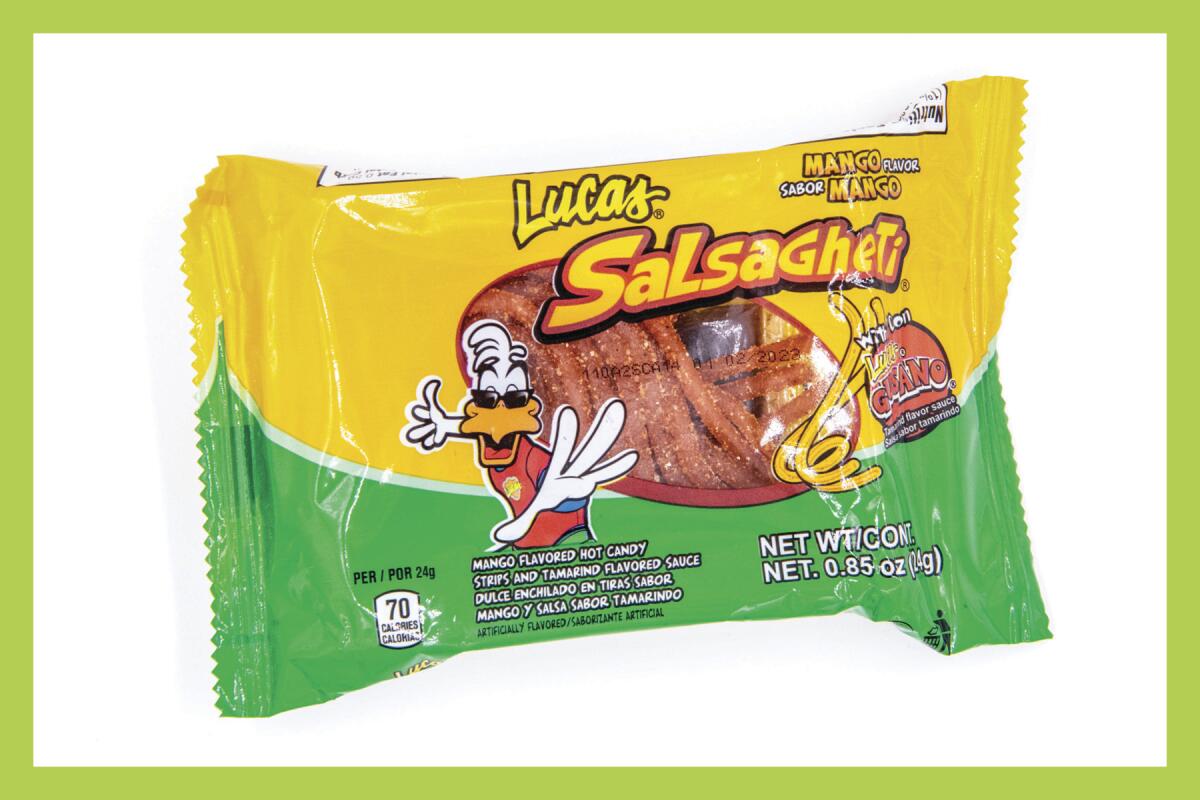
Lucas Salsagheti
This is one of the most interesting candies I’ve ever tried — thin strips of mango gummy “spaghetti” and a separate sachet of tamarind sauce that you pour over the strips. It sounds good in theory, and it’s certainly fun to put together, but in practice, it doesn’t quite work.
The parts don’t mesh. The strips are a bit too plasticky tasting and the very sour sauce, meant to counterbalance the sugar, tastes a little gloppy. While very interactive, there are better-tasting Lucas candies.
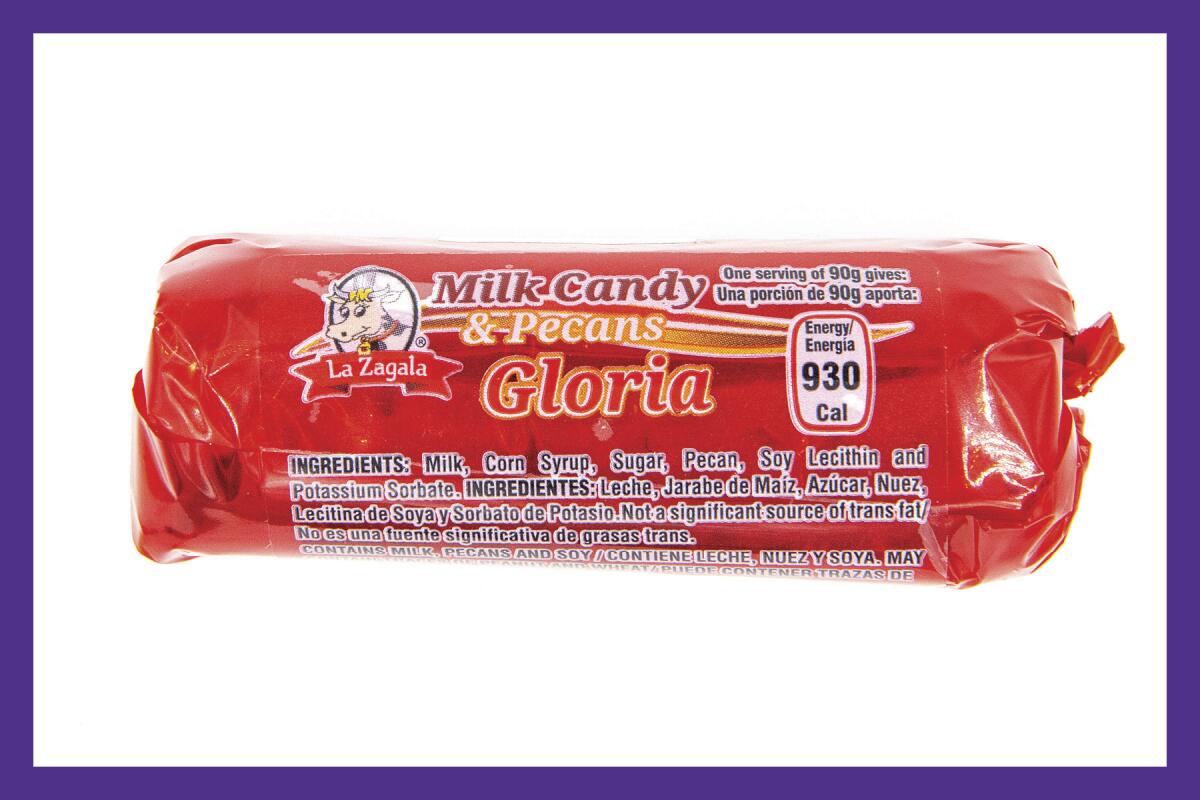
Gloria Pecan Milk Candy
The La Zagala brand we tried in the video is essentially a roll of nut-studded caramel, wrapped to look like a small sausage or roll of Pillsbury cookies. The taste is decent — pretty sandy, but with lots of good pecan flavor. Las Sevillanas makes a two-bite goat milk Gloria candy that is superior to this: richer and creamier.
La Vaquita Milk Caramel Lollipop
There’s always been something unsettling about an anthropomorphic food mascot that is essentially consuming itself, or a part of itself. (My brother started an Instagram account dedicated to it.) The Pollo Campero logo is an example, in which a chicken can be seen cheerfully serving up a plate of its deep-fried brethren. La Vaquita is not nearly at that level, but the cartoon cow still seems entirely too happy to be producing milk-rich lollipops for human consumption.
It’s just as well, I guess, because the lollys don’t taste particularly creamy or milky. They have that distinctive breakage of a piece of toffee, or a Werther’s, but the flavor is closer to a spiced bread than anything in the dairy category.
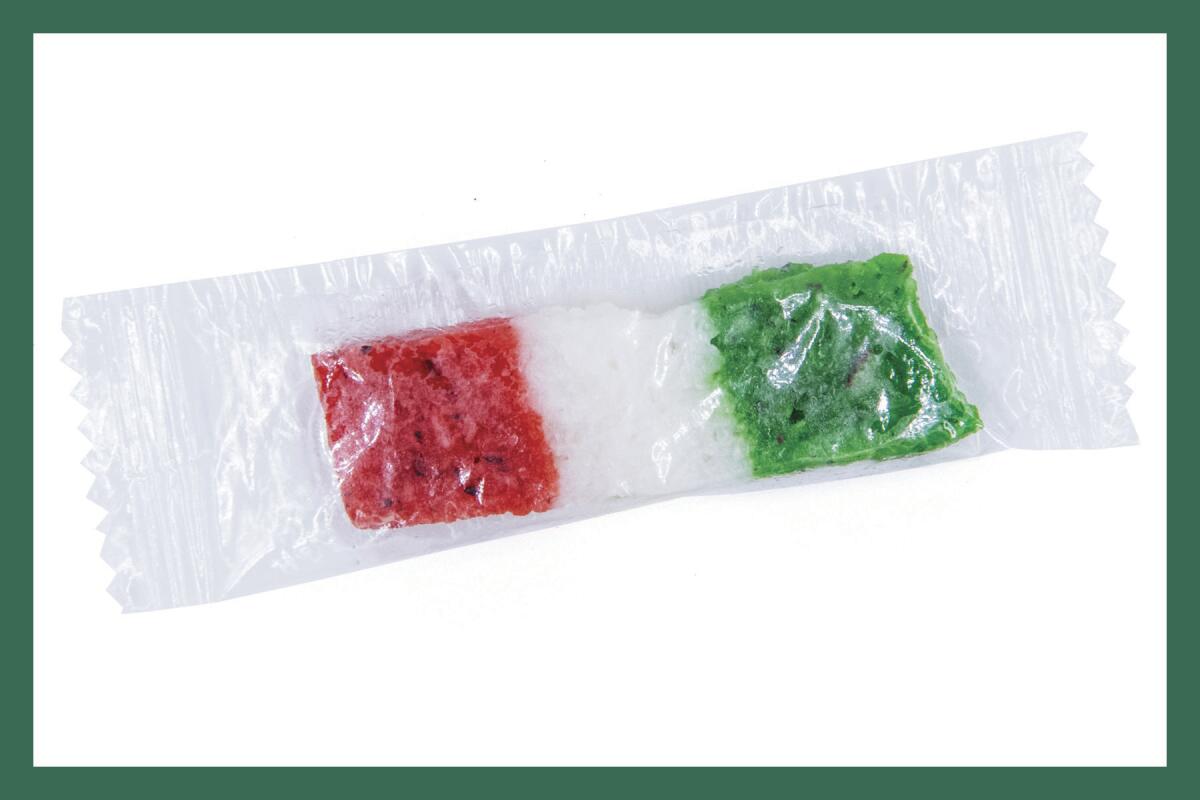
Mexican Flag Coconut Candy
What’s wrong with a little patriotic candy now and then? Several different companies make a bandera de coco, or coconut candy that’s colored red, white and green like the Mexican flag. The one we tried came from Dulces Kokito in Jalisco.
For coconut fans (or flag aficionados), this could be appealing. I can’t recommend it otherwise. Despite being somewhat oily, the candy still manages to dry out your mouth, leaving you chewing on stray coconut flakes minutes after consumption.
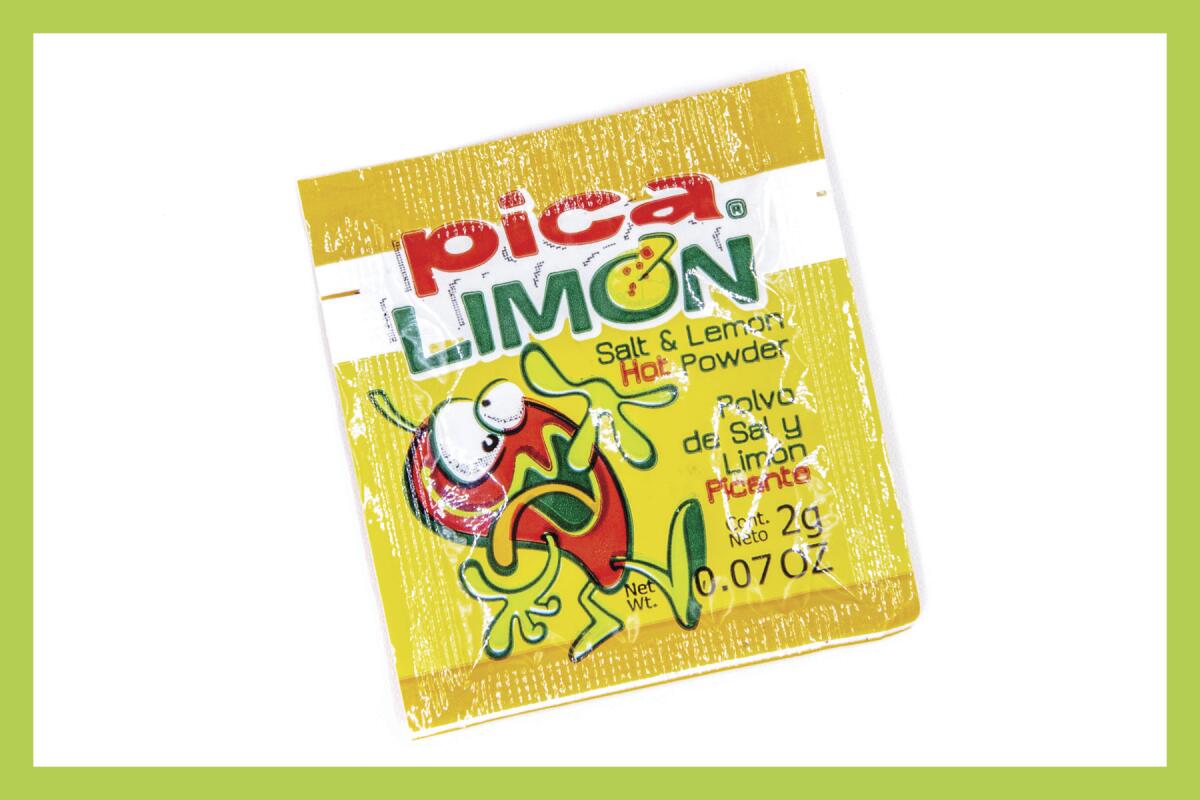
Pica Limón
During the Pica Limón segment of the candy-sampling video, in a move that can only be characterized as admirably reckless, Cody poured the entire sachet of “salt & lemon hot powder” into his mouth before spinning out into an uncontrolled coughing fit.
That’s because the description is 100% accurate. It is spicy, lemony salt. I could certainly imagine rimming a margarita glass with this, but I won’t be pounding back fistfuls on its own anytime soon.
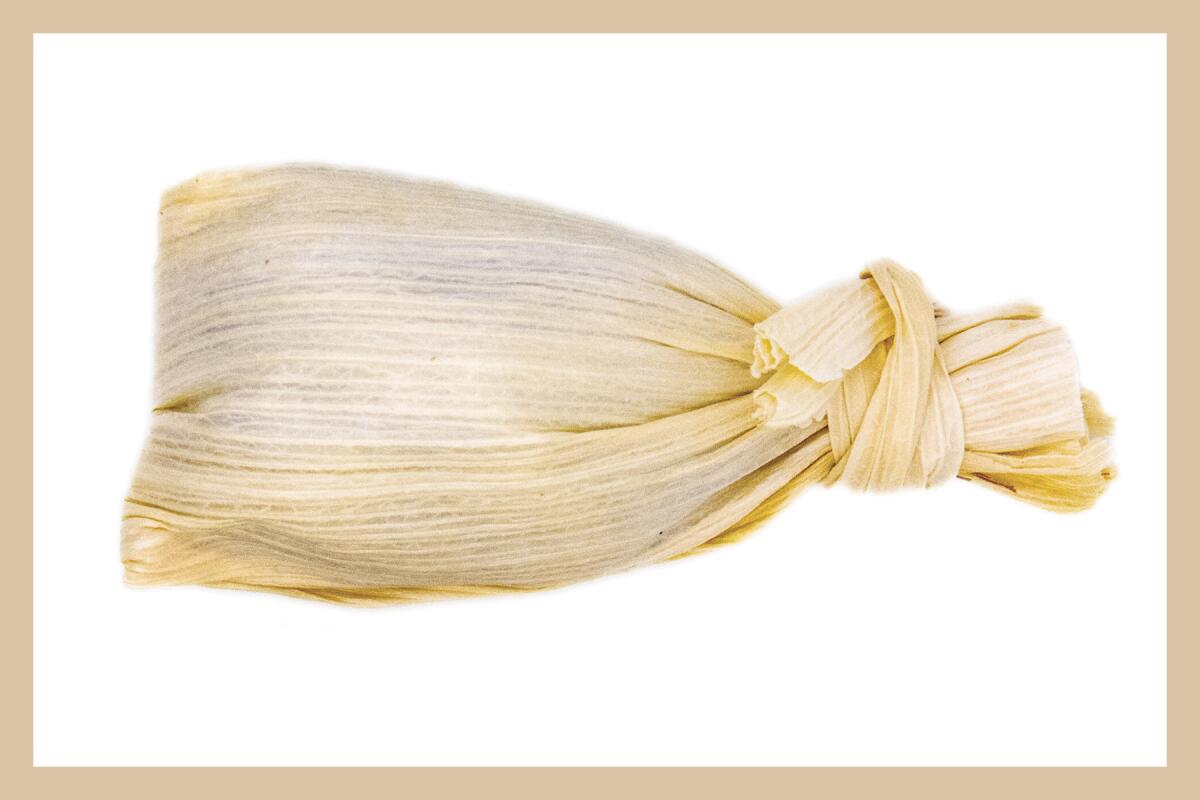
Tamalitos
Everyone in our group who tried this candy went through the same rollercoaster of emotion: Elation at how cute these tamalitos looked, followed by confusion at what was inside. First, the good: These are made to look like adorable, tiny tamales, and are even wrapped in tiny corn husks. That’s where anything resembling a tamal ends.
You’d be forgiven for thinking some sort of masa-flavored candy awaited you. But what awaits you is a lump of tamarind pulp wrapped in plastic. After my initial shock, I looked at the packaging, which very plainly said, “tamarind flavored candy.” Lesson learned: Don’t judge on appearances!
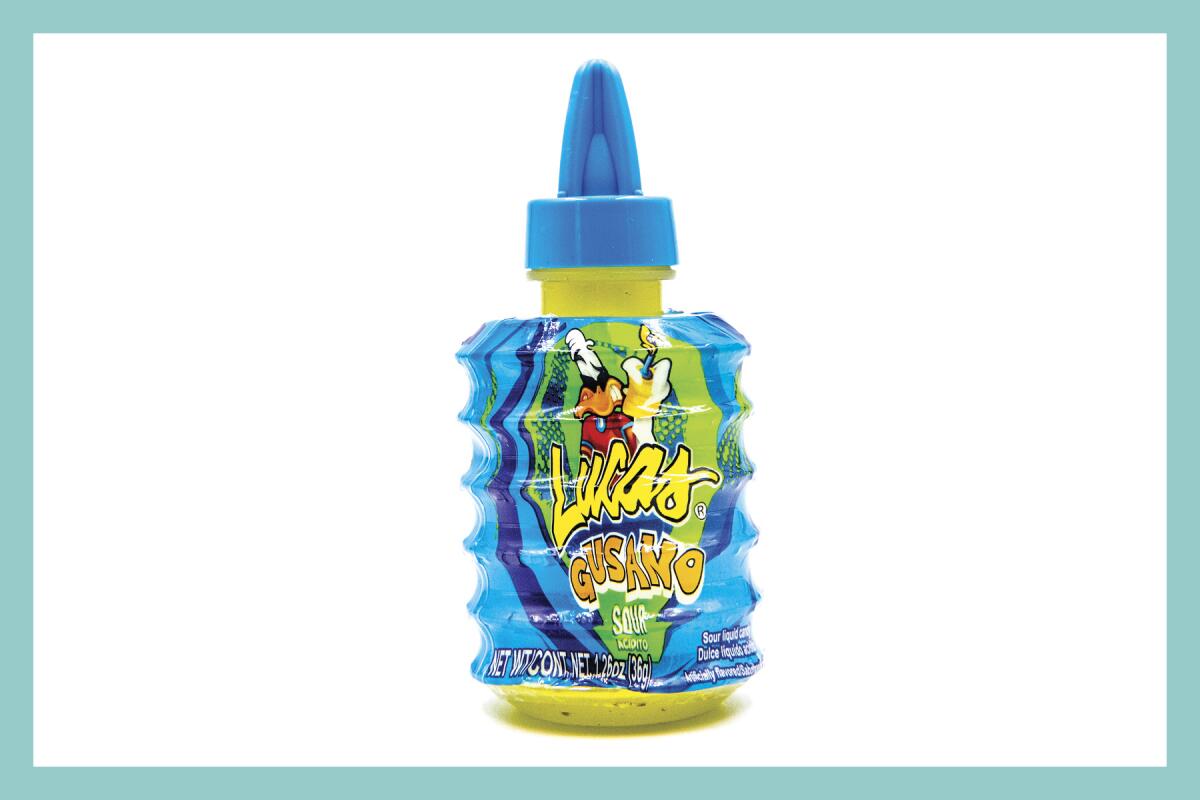
Lucas Gusano (Sour)
The words “transmission fluid” came up while the group tasted this — it’s a thick, Secret-of-the-Ooze green liquid you squirt into your mouth through a thin nozzle attached to a billows-like cylinder. It tastes like chemicals and leaves a viscous sheen coating your mouth.
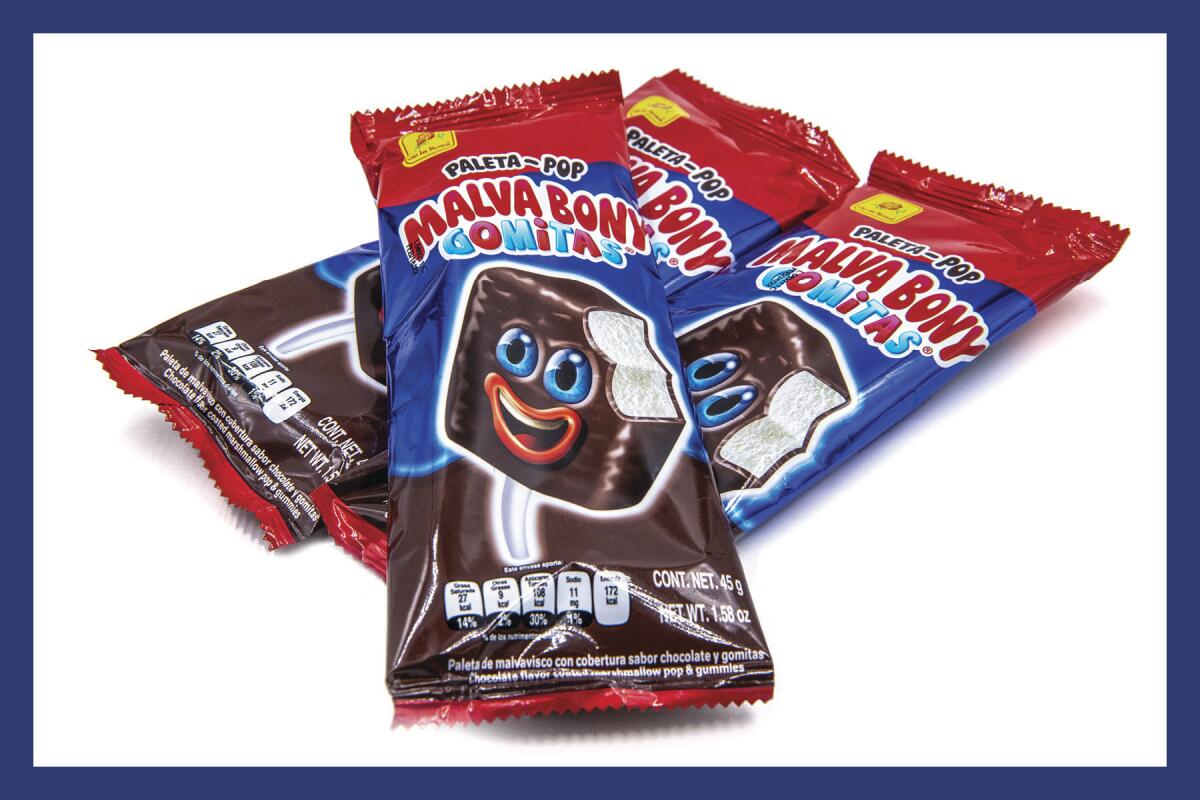
Malva Bony Paleta-Pop
The countenance of the Malva Bony pop, a quadrangle of chocolate-covered marshmallow with two blue gummy candies as eyes and a red candy forming a smiling mouth, doesn’t say “fun” so much as “sleep paralysis demon.” It’s a little haunting.
The taste isn’t a lot better — but I don’t particularly love marshmallow. If you do, and you’d like a brick of it coated in chocolate, staring deep into your soul, then go for it!
More to Read
Eat your way across L.A.
Get our weekly Tasting Notes newsletter for reviews, news and more.
You may occasionally receive promotional content from the Los Angeles Times.












